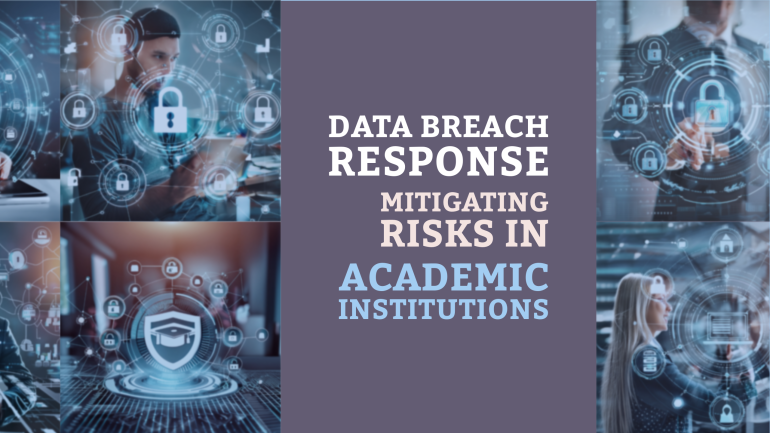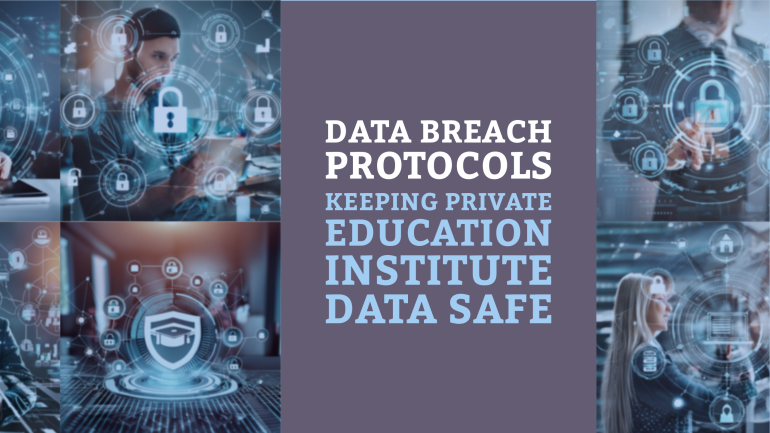Table of Contents
You may also interested:
TL;DR: Implementing Robust Data Security Protocols
- Strong Password Protection: Implement strict password policies to enhance data security.
- Encrypted Communication Channels: Utilize encryption to secure data during transmission within the network.
- Regular Security Audits: Conduct periodic security audits to identify vulnerabilities and address them promptly.
- Data Access Controls: Manage access controls to ensure that only authorized personnel can access sensitive data.
- Employee Training: Provide comprehensive training to staff on data security best practices to mitigate risks.
Just as technology advances, so do the threats to data security. Safeguarding sensitive information is paramount to protect the university’s integrity and the privacy of its community members. In this blog post, we will investigate into the importance of implementing robust data security protocols to mitigate cybersecurity risks and ensure confidentiality and integrity of sensitive data. We will explore the global trends in cyber threats, discuss the latest data protection regulations, and provide insights into the best practices to bolster data security within the university’s information systems.
Assessing the Current Data Security Landscape
Identifying Potential Vulnerabilities
Data security is a critical aspect of any organization, especially in an academic institution. Identifying potential vulnerabilities is the first step in ensuring robust data protection. This involves conducting thorough assessments of the current data storage systems, networks, and access points to pinpoint any weak links that could be exploited by hackers or malicious actors.
Reviewing Existing Protocols and Policies
Reviewing the current data security protocols and policies is crucial to ensure they align with industry best practices and compliance regulations. This involves evaluating how data is stored, encrypted, and access is controlled within the organization. Any gaps or outdated practices must be identified and addressed promptly to mitigate security risks.
Designing a Robust Data Security Framework
Key Components of a Successful Security Protocol
If a robust data security framework is to be successful, key components must include encryption, access controls, regular software updates, intrusion detection systems, and a robust incident response plan. These elements work in synergy to create layers of protection that safeguard sensitive data from unauthorized access and malicious threats.
Ensuring Compliance with Legal and Regulatory Standards
On the topic of legal and regulatory compliance, one must adhere to a variety of laws and industry standards, such as GDPR, HIPAA, PCI DSS, and others relevant to the data they handle. Non-compliance can lead to severe penalties, damage to reputation, and loss of customer trust. It is imperative to stay abreast of changing laws and regulations to maintain a secure environment for data processing.
Data security measures must also encompass employee training on data handling best practices, incident response drills, and regular security audits to maintain compliance and stay ahead of potential threats.
Implementing Security Measures
Employee Training and Awareness Programs
For robust data security protocols, one of the key measures is implementing employee training and awareness programs. By providing comprehensive cybersecurity training to all staff members, we can ensure that everyone understands the importance of data security and best practices for protecting sensitive information. Regular awareness programs and simulated phishing exercises can help employees identify and avoid potential security threats, minimizing the risk of data breaches.
Adopting Cutting-Edge Security Technologies
An crucial step in implementing robust data security measures is adopting cutting-edge security technologies. By leveraging advanced encryption techniques, multi-factor authentication, and intrusion detection systems, we can fortify our defenses against cyber threats. Implementing these technologies can significantly enhance the security posture, safeguarding sensitive data from unauthorized access or breaches.
Plus, integrating artificial intelligence and machine learning algorithms into our security systems can enhance threat detection capabilities and enable real-time response to potential security incidents. By staying ahead of evolving cybersecurity threats through the adoption of the latest technologies, one can maintain a secure environment for data processing and storage.
Monitoring and Maintaining Security
Regular Security Audits and Assessments
The key to ensuring the effectiveness of data security protocols is through regular security audits and assessments. These audits should be conducted periodically by internal or external security experts to identify vulnerabilities and weaknesses in the system. By proactively identifying these issues, one can address them promptly before they are exploited by cyber threats.
Incident Response Planning and Management
Security incident response planning and management are critical components of maintaining robust data security. In the event of a security breach or cyber-attack, having a well-defined incident response plan enables the organization to respond swiftly and effectively to mitigate the impact of the incident. This includes procedures for containing the breach, investigating the cause, and restoring systems back to normal operation.
Planning for incident response should involve training employees on their roles and responsibilities during a security incident, as well as conducting regular drills and simulations to test the effectiveness of the response plan. Having a comprehensive incident response plan in place can significantly reduce the damage caused by a security breach and enhance one’s ability to recover swiftly.
Summing up
With this in mind, implementing robust data security protocols is crucial to safeguard sensitive information and maintain the trust of users. By utilizing encryption, access controls, monitoring systems, and regular security audits, one can strengthen its defenses against cyber threats and data breaches. It is necessary to stay proactive in updating and refining its security measures to adapt to evolving cyber threats and ensure the protection of confidential data. Ultimately, a comprehensive and robust data security strategy is vital to uphold its reputation as a trusted institution that prioritizes the security and privacy of its stakeholders.
FAQ
Q: What are some key considerations for implementing robust data security protocols?
A: When implementing data security protocols, key considerations include identifying sensitive data, defining access controls, implementing encryption, conducting regular security audits, and providing staff training on security best practices.
Q: How can sensitive data be identified in the context of data security
A: Sensitive data can be identified by conducting a thorough inventory of all data collected and stored, categorizing data based on its sensitivity, and implementing data classification policies to ensure proper handling and protection.
Q: What role do access controls play in ensuring data security?
A: Access controls play a critical role in data security by limiting access to sensitive data to authorized individuals only, implementing role-based access control mechanisms, and monitoring access logs to detect any unauthorized activities.
Q: How does encryption contribute to enhancing data security protocols ?
A: Encryption helps enhance data security by converting sensitive information into an unreadable format that can only be deciphered with the correct decryption key, thus providing an additional layer of protection against unauthorized access or data breaches.
Q: Why is it important to conduct regular security audits in the context of data security?
A: Regular security audits are important in ensuring data security by identifying potential vulnerabilities, assessing the effectiveness of existing security measures, and proactively addressing any weaknesses or gaps in the security infrastructure to prevent data breaches or cyberattacks.




